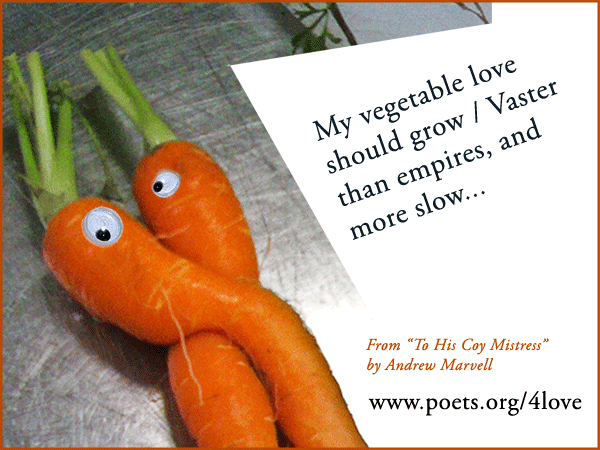About the Poet:
Well-known for being one of the first renowned English metaphysical poets of his time, Andrew Marvell was also a satirist and politician. Born on the 31st of March 1621 in Yorkshire to the clergyman of the Church of England, he completed his Bachelors at Trinity College, Cambridge. Having travelled through continental Europe, he seemed to have mastered four languages that included French, Italian and Spanish. Marvell’s poems vary from the romantic lore of “to His Coy Mistress” and “The Definition of Love”, to the empowering political address in “An Horatian Ode upon Cromwell’s Return from Ireland”, to the overwhelming tale of the aristocratic household in “Upon Appleton House” and “Garden”. Marvell was known for his sly use of words disguised in his poems to denote his ideals and views in the metaphysical nature.
Introduction to the poem:
The poem by the metaphysical poet Andrew Marvell is about the internal fight between the controversies that the body and the soul face amongst each other. The body blames the soul for all the sins that it has committed while the soul in turn blames the body for trapping it inside the body’s frame. Each states their own predicaments and wants the destruction of the other. This poem is thus a debate over the mind versus the body, whose points are so well proposed by Marvell to the extent that the reader himself wonders as to who is to blame.
Setting of A Dialogue between the Soul and Body:
The poem is of the metaphysical kind, whose narrators are the body and the soul individually. As the title suggests, the poem in itself is an internal dialogue between the two entities of a prisoner, each blaming the other for the present consequences. The soul imposes charges for the body to cage its thinking and declares its wishes for the body to expire so that it can be one with the Almighty. The body in return holds the soul responsible for its conflicting emotions that has compelled the body to make its sinful decisions. The poem is so well envisaged metaphysically that both the mind and the soul are felt to be two separate entities all together.
Poetic Devices in A Dialogue between the Soul and Body:
Alliterations:
Line 3: “With bolts of bones”
Line 6: “Deaf with the drumming of an ear”
Line 10: “vain head, and double heart”
Line 11: “O who shall me deliver whole”
Line 17: “wanting where its sprite to try”
Line 18: “Has made me live to let me die.”
Line 20: “Since this ill spirit it possest.”
Simile:
Line 2: “A soul hung up, as ‘twere, in chains”
Personification/ Metaphor:
Apart from the personification of the body and the soul itself, personification and metaphors are implied in every sentence of the poem with phrases like “deaf with the drumming of an ear” or “who shall deliver me, from bonds of this tyrannic soul?” and both the soul and the body seem to personify each other as the origin of each other’s sorrows.
Style of A Dialogue between the Soul and Body:
“O who shall, from this dungeon, raise” (A)
“A soul enslav’d so many ways?” (A)
“With bolts of bones, that fetter’d stands” (B)
“In feet, and manacled in hands;” (B)
“Here blinded with an eye, and there” (C)
“Deaf with the drumming of an ear” (C)
Summary of A Dialogue between the Soul and Body:
Andrew Marvell, the metaphysical poet that he was, wrote this poem as a debate between the implications that the soul faces because of the body and vice versa. The poem depicts intricate problems each of them face in such a way that they bring the reader to feel sorry for both and cannot side with either of the two due to all the validations they put forward.
Critical Analysis of A Dialogue between the Soul and Body:
“A Dialogue between the Soul and the Body” is a mirror that Andrew Marvell has put forth to his readers so as to reflect upon the battle that goes on between their soul and their body. The metaphysical nature of the soul being caged inside the body and the body feeling trapped by the torment that the soul creates mentally is an irony in every sense. The pain felt by both entities reaches up and touches the reader very deeply to realize how both need to exist and stay co-dependent over each other to stabilize the individual completely.
Central Idea of A Dialogue between the Soul and Body:
Marvell is keen on familiarizing the reader with the battle that goes on in one’s mind where the body and the soul are at constant opposition. He aims to narrate to the reader about each entity’s problems and also hopes for the reader to be lead to the truth of their actions. The soul feels entrapped within the body while the body feels chained to the voice of the soul. But then again, none of them can be eliminated and hence pushes the reader to make a choice as he or she keeps reading.
Tone of A Dialogue between the Soul and Body:
The poem begins with the personification of the soul, accusing the body of trapping it in a dungeon and bolting its hands and feet with chains. It blames the body for obstructing its vision with the sights that the body sees with its eyes and deafens it with the sound it hears from the ears. The body in turn accuses the soul for being the stake that pulls through the body each time that it takes action. The body says that it is shaken like a precipice that is afraid of collapsing at any given time at the mercy of the soul. Both entities put forward their predicaments and wish for the destruction of each other, but know that despite their differences, one cannot coexist without the other. The element of sorrow is a constant in both the voices and hence brings a dark tone to the entire poem.
Conclusion:
Andrew Marvell metaphysically depicts each emotion of both entities in a manner like no other. He indulges the reader to rationalize the problems of both individuals and also gives the reader the thought to ponder over who is worthier than the other. Marvell also means to send out the message of the importance of the soul and body needed to exist in peace for a calm and controlled being all together.
Contributor: Deeksha Honawar
Some online learning platforms provide certifications, while others are designed to simply grow your skills in your personal and professional life. Including Masterclass and Coursera, here are our recommendations for the best online learning platforms you can sign up for today.
The 7 Best Online Learning Platforms of 2022
- Best Overall: Coursera
- Best for Niche Topics: Udemy
- Best for Creative Fields: Skillshare
- Best for Celebrity Lessons: MasterClass
- Best for STEM: EdX
- Best for Career Building: Udacity
- Best for Data Learning: Pluralsight
















Thank you for the guidance.